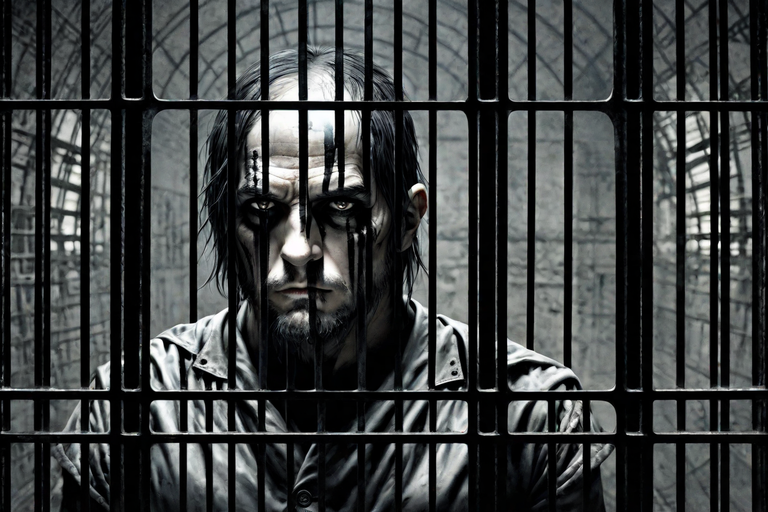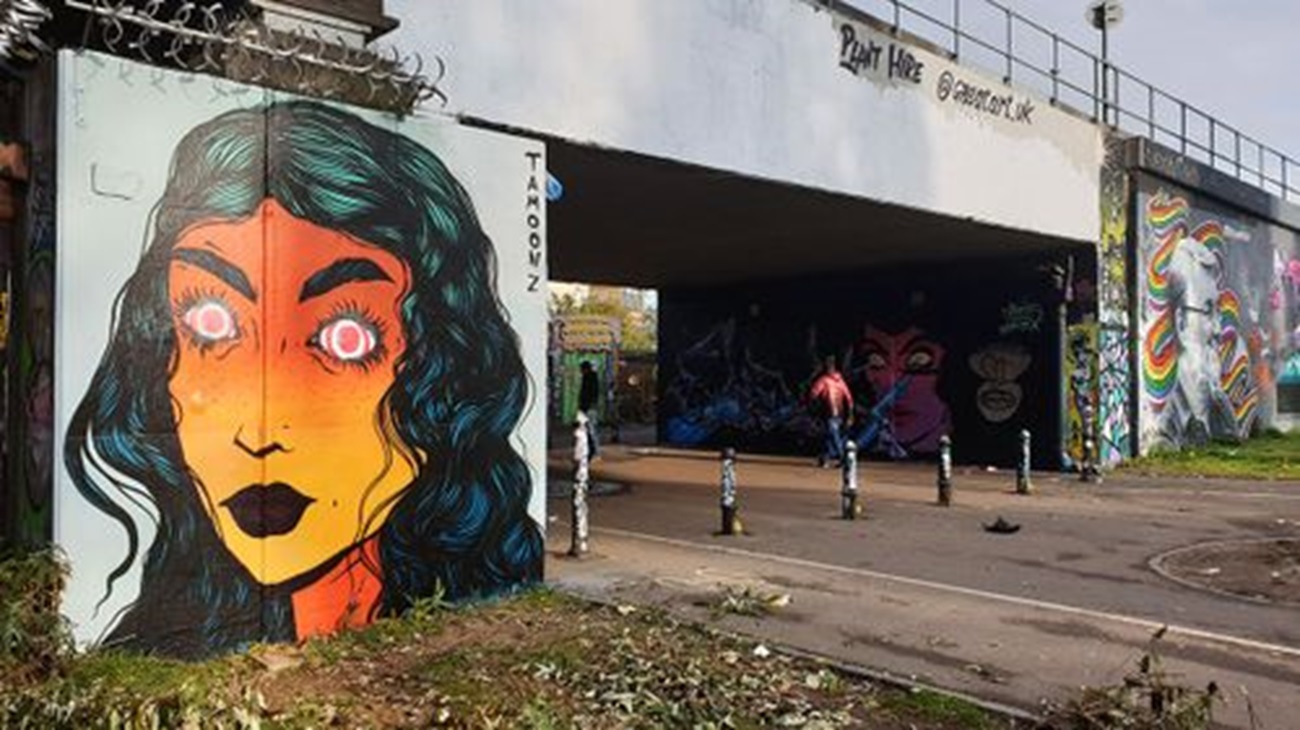Heteronomy is that state in which the context for everything we do (and everything we think) is provided for us by some ‘arbitrary external authority’. It doesn’t matter to us what this EA is, all that matters is that we can place our absolute trust in. In this modality it doesn’t in the least bit matter what we are being told to do just as long as there is an authority telling us to do it. It doesn’t matter what we think about things just as long as there is some context out there for us to buy into (which will provide meaning for what we’re thinking or doing). We don’t want to have anything to do with the big picture, in other words. The plain and simple fact of the matter is we just don’t want to know – we just want to ‘get on with things’ within some given context, a given context which we are not at all willing to examine. Organised religion is a perfect example of this sort of thing. Society as a whole is another. This is ‘the state of heteronomy’ in a nutshell…
This creates sense of security on the one hand (which is of course what we’re looking for), but it also produces a great big blind spot since we know all about the foreground but nothing at all about the background. This turns into a distinctly ominous awareness precisely because it has been repressed, precisely because it has been ‘thrust out of sight. This submerged awareness naturally has a strong paranoid flavour to it – we can’t help knowing that there’s something going on, something which – on account of our blind spot – we’re not able to know about. We have an ominous feeling that something is ‘going down’ (something which – crucially – isn’t going to work out to our benefit), but beyond this uncomfortable feeling we haven’t a clue. The core awareness in paranoia is therefore the murky, semi-submerged awareness that we are being manipulated by some agency that is hidden from view. Of all the uneasy feelings we could have, this has got to be the most uncomfortable of all – on a semi-conscious level of awareness we know that anything at all could turn out to be the case. No matter what sinister plot we suspect might be afoot, we also know that this in turn could be a ‘blind’ or ‘red herring’ to put us off the scent of something even more sinister…
This is, as we keep reiterating, a deeply uncomfortable awareness to have. It’s ‘uncomfortable’ because there is no limit to it, no end to where it all might lead. It’s a ‘hall of mirrors’. As Philip K Dick – the undisputed master of existential vertigo – is quoted as saying on the cover of numerous science fiction paperbacks – ‘there is always another level of conspiracy behind the one we know about’. As Chris Martin, writing in the Occult Triangle Lab on the subject of PKD and his obsession with probing beneath the surface of everyday ‘presented reality’, observes –
The ultimate reality, Dick’s ultimate object of contemplation, was always behind another layer of illusions, and there was no way to know if he had found it.
There is no ultimate reality – we might say – because there always has to be something behind every Stated Reality. Someone or something has to have stated it, after all – it didn’t get there by itself! No stated reality ever can be final in the way that it presents itself as being because no matter what has been stated it could always have been something else. There is freedom behind it, in other words – we could have stated something entirely different, or (even more radically) we could have not stated anything at all. ‘Whoever plays, plays freely,’ says James Carse…
This (as Carse argues) constitutes ‘the essential self-contradiction inherent in all finite play’ – rationality (which equals ‘finite play’) furnishes us with definite realities (that is after all the whole point of the exercise) and what makes a definite reality be ‘a definite reality’ is that it’s final, is that it cannot be reduced to anything else (which is to say, it could never have turned out to be anything other than what we are being presented with). What we are looking at here therefore is ‘the irreversible arrow of entropic decay’, the arrow which always forgets where it came from (or, as we could also say, ‘the arrow which always misrepresents its own past’). Where it came from is undefined, where it came from is ‘openness’ or ‘an unbounded plurality of possible perspectives’. An ‘unbounded plurality of possible perspectives’ means that any reality at all could have been stated; the entropic veil that has been drawn over the arrow’s origin creates the impression that this is the only statement that could ever have been made. We have been ‘railroaded’, in other words.
Whenever thought makes a statement then we get trapped in it. We get boxed in. Our perception of reality is very strictly limited to ‘what thought has stated as being the case’; our containment within the limits that have been set for us is very nearly absolute. From time-to-time ‘incongruent content’ will break through and although we may recognise the truth of what we are becoming aware of at the time we will almost certainly discount it again when the machinery of the rational mind is back in charge. History will be re-written to avoid mentioning it. Life – in practice – is never what we think it should be (or what the textbooks say it is) but we are of course all very good at ignoring the bits that don’t fit in with our theories, our schemas.
We are actually living in a vastly oversimplified version of the world and not only are we living in a oversimplified version of reality we are also living in a social collusion (where what is counted as real only gets to be so because it’s been agreed in advance by the collective) this makes it all but impossible to free ourselves from the official story – it’s hard enough to doubt our own ideas, never mind when these same ideas are reinforced on all sides by everyone we meet. This is ontological security for sure, but – at the very same time (although we don’t see it) – it is a very great horror. And yet despite our lack of insight regarding ‘what’s going on’ the repression of this awareness creates an underground current of paranoia that will surface in a significant portion of the population. This isn’t the same type of thing that we come across in outright, ‘full-on paranoid psychosis,’ but it is clearly a closely related phenomenon. The most obvious difference between acute psychotic paranoia and what we might call ‘low-grade societal paranoia’ is the sheer, (unimaginable to anyone who hasn’t experienced it) intensity of the former, but another – somewhat less obvious – difference is that paranoid psychosis is, most emphatically, not a shared or collective experience; it is in other words not something that one can talk about to others and expect to be understood. My paranoia, in this case, is peculiar to me despite the clear similarities in ‘themes’ that can be observed by an external observer. I am – for example – not going to post stuff about my paranoid beliefs on social media – that is the very last thing I’m going to do! And even if I did (which I won’t because it would be attracting exactly the wrong sort of attention as far as I’m concerned) no one is going to ‘like’ my posts. It’s not going to ‘strike a chord’. There is no social solidarity to be had here – persons suffering from paranoid psychosis do not ‘self-affiliate’, they do not go around in groups…
In the case of low-grade societal paranoia however, this is exactly what does happen and in the last few decades we have seen this sort of thing become a a worldwide phenomenon. It is – on the contrary – what we could call ‘a significant social phenomenon’. We can see groups of people who have attached their ‘free floating, low-grade paranoia’ to one or other popular theories about ‘what’s going on behind the scenes’ and this, of course, allows everyone involved to experience the same type of group validation that members of organised religion do (or – more to the point – that members of mainstream society do). The uneasy paranoid-type feelings remain with us but there is now more comfort in it due to the sense of solidarity that we have found in subscribing to the group view of ‘what’s really going on in the world’. There is great comfort in this, and there is also the possibility of collectively acting out our fear via targeted aggression. Paranoid psychosis can also manifest in targeted violence or aggression, but aggression on the part of ‘me as a single, isolated individual’ is a very different thing to systematised aggression on the basis of many thousands (or tens of thousands) of people acting in unison. When this happens what we have as a result is what Jung calls a ‘psychic epidemic’, which is generally associated of course with far-right political movements and – classically – with the Nazi movement in Germany in the first half of the twentieth century.
This isn’t to say that the ideas being expressed are necessarily illusory, of course. ‘Just because you’re paranoid’…., etc. As Robert Anton Wilson (who writes a lot – from first hand experience, too – about paranoia) has observed, “A paranoid is someone who knows a little of what’s going on”. Paranoia is a form of intelligence – a form of intelligence most of us don’t have. There is (we might say) something dodgy going on behind the scenes, and it isn’t at all to our benefit. As RAW says, it is in the nature of humans to conspire against each other – throughout human history we have plotted against ourselves, and – as always – there are ‘wheels within wheels within wheels’, ‘plots within plots within plots’. The awareness that we are being manipulated by some mysterious agency which is both ‘malign and ‘hidden from our view’ is an archetypal one – what we’re looking at here is nothing other than the Gnostic Myth of the Demiurge and the False Creation, which has spontaneously reappeared in recent times in such films as The Matrix and The Truman Show (as well as being a theme in many of Philip K Dick’s novels).
From a psychological point of view, therefore, we can say that the myth of the Demiurge represents a universal truth. It represents ‘a level truth that transcends everything that we normally understand as being true’. This is not a ‘literal truth,’ therefore – literal truths belong to the machinery of thought, which is our jailer (which is ‘the Demiurge himself’); what frees us is not looking for ‘the right literal truth’ (which only leads us into an infinite regression, which is an endless continuation of the trap) but realising that the universe is always far beyond our absurd attempts to rationalise it.
Thought is by its very nature quintessentially humourless and this is precisely why it is a trap; this is why it is a source of endless misery. We might say that this is the ‘litmus test for reality,’ therefore. (which is the role of the metal spinning top in the film Inception). The ‘litmus test’ is that when we see reality for what it actually is in itself, then this is profoundly funny. If it’s ‘serious’ it’s not real, if it’s ‘serious’ then it’s a simulation). Reality is thus the greatest joke of all – the punchline is ‘something we could never see coming’. [Samsaric existence is the joke, enlightenment the punchline.] As the founder of the Dzogchen lineage, Longchenpa, says –
Since everything is but an apparition, having nothing to do with good or bad, acceptance or rejection, one may well burst out in laughter.
And as another Tibetan Buddhist Lama, Chogyam Trungpa, writing roughly five hundred years later, expounds –
Sense of humour seems to come from all pervading joy, joy which has room to expand into a completely open situation because it’s not involved with the battle between ‘this’ and ‘that’. Joy develops into the panoramic situation of seeing (or feeling) the whole ground, the open ground. This open situation has no hint of limitation, of imposed solemnity. And if you do try to treat life as a ‘serious business’, if you try to impose solemnity on life as if everything is a big deal, then it is funny. Why such a big deal?
Image credit – talesfromtheneonbeach.com






